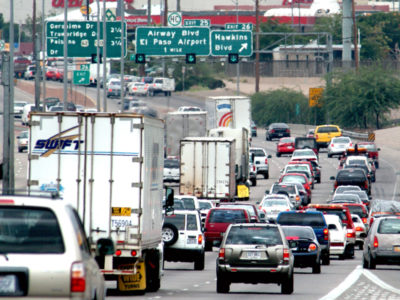 Fueled by the state’s steady growth and healthy economy, Houston’s West Loop this year repeats its 2018 rank as the most gridlocked corridor in the state. Interstate 35 in central Austin comes in a close second, with the Southwest and Eastex Freeways in Houston and Dallas’ Woodall Rodgers Freeway rounding out the top five.
Fueled by the state’s steady growth and healthy economy, Houston’s West Loop this year repeats its 2018 rank as the most gridlocked corridor in the state. Interstate 35 in central Austin comes in a close second, with the Southwest and Eastex Freeways in Houston and Dallas’ Woodall Rodgers Freeway rounding out the top five.
Researchers from the Texas A&M Transportation Institute use traffic volume and speed data to compile the annual listing of the most crowded roadways in Texas, comparing the time it takes to travel on a congested roadway against the time needed to travel the same corridor in uncongested conditions.
The tally changes little from year to year for the most congested roadways. Only 13 road segments are new to this year’s top 100. A total of 92 are concentrated in Texas’ four biggest metro areas, but roadway delay is becoming more common in urban areas of varying sizes. This year’s complete list of congested road rankings includes 1,854 segments spread across 66 counties, available online at Texas’ Most Congested Roadways 2019.
The Texas Department of Transportation — in an initiative known as Texas Clear Lanes — has increased efforts to address roadway gridlock, largely through two voter-approved funding initiatives directing more resources to the State Highway Fund for non-tolled projects.
“TxDOT’s mission is ‘Connecting you with Texas’, and we are focused on getting people where they need to go efficiently and reliably by paying attention to where improvements are needed most,” said Marc Williams, TxDOT’s deputy executive director. “Congestion relief is a priority for our top chokepoints as we balance the many demands on our roadways across the state.”
The analysis again this year includes a focus on how freight congestion affects highway corridors across Texas. Road segments plagued by the greatest truck congestion are found in Austin, Houston and on the U.S.-Mexico border near Laredo.